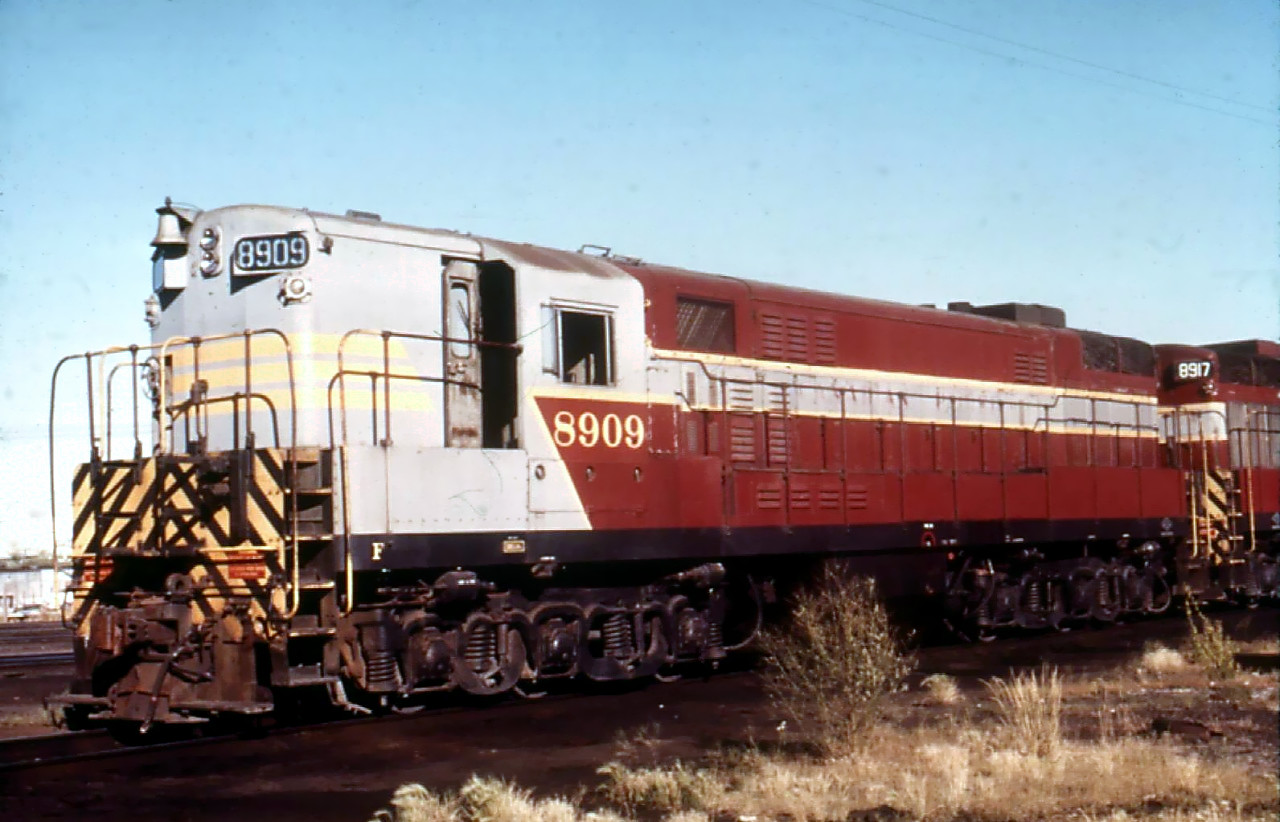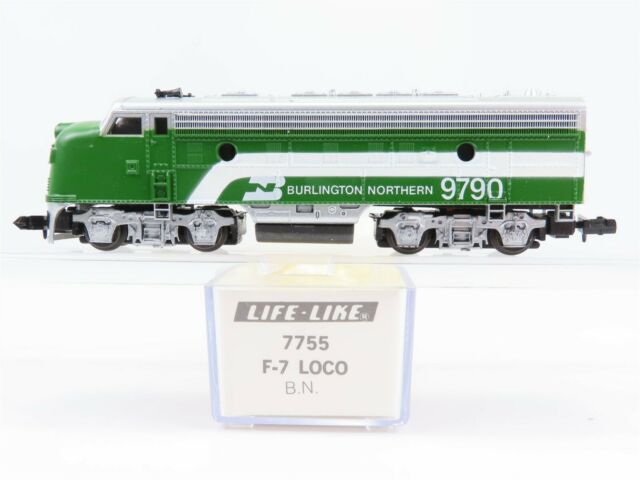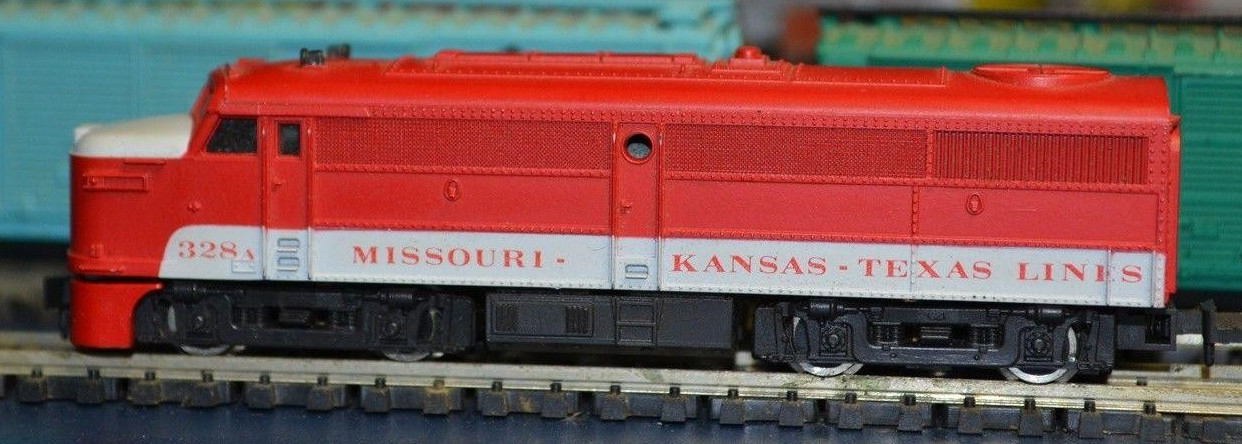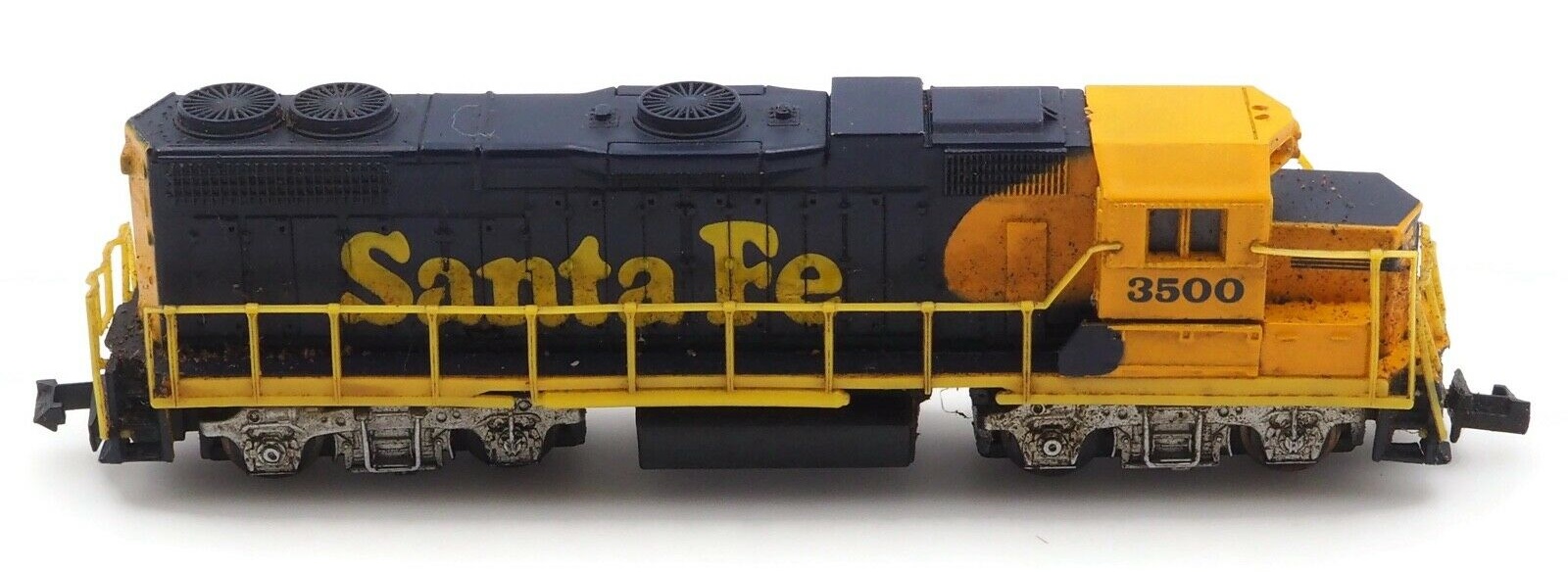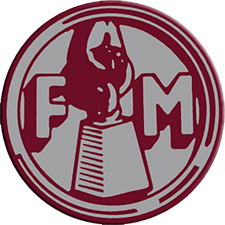History: The H-24-66 was a diesel-electric railway locomotive model produced by Fairbanks-Morse and its Canadian licensee, the Canadian Locomotive Company. These six-axle hood unit road switchers, nicknamed Train Masters, were deployed in the United States and Canada during the 1950s. Each locomotive produced 2,400 horsepower (1.8 MW). They were the successor to the ultimately unsuccessful Consolidated line of cab units produced by F-M and CLC in the 1950s. In common with other F-M locomotives, the Train Master units employed an opposed piston-design prime mover. The official model designation was H-24-66 and rode on a pair of drop equalized three-axle "Trimount" trucks giving it an C-C wheel arrangement.
Touted by Fairbanks-Morse as "...the most useful locomotive ever built..." upon its introduction in 1953, the 2,400 horsepower (1.8 MW) H-24-66 Train Master was the most powerful single-engine diesel locomotive available, legendary for its pulling power and rapid acceleration. While some railroads saw advantages in the Train Master's greater power, the perception on the part of others that the unit had too much horsepower (coupled with the difficulties inherent in maintaining the opposed-piston engine, inadequacies in the electrical system, and a higher-than-normal consumption of cooling water) contributed to poor marketplace acceptance of the Train Masters. Perhaps it was simply ahead of its time, as no competitor offered a locomotive with an equal horsepower rating until the ALCO RSD-7 entered production in January, 1954 (As an aside, the EMD SD24 did not arrive on the scene until July, 1958, and GE did not introduce their U25C until September, 1963). Both F-M and CLC ultimately left the locomotive business.
From Wikipedia
Touted by Fairbanks-Morse as "...the most useful locomotive ever built..." upon its introduction in 1953, the 2,400 horsepower (1.8 MW) H-24-66 Train Master was the most powerful single-engine diesel locomotive available, legendary for its pulling power and rapid acceleration. While some railroads saw advantages in the Train Master's greater power, the perception on the part of others that the unit had too much horsepower (coupled with the difficulties inherent in maintaining the opposed-piston engine, inadequacies in the electrical system, and a higher-than-normal consumption of cooling water) contributed to poor marketplace acceptance of the Train Masters. Perhaps it was simply ahead of its time, as no competitor offered a locomotive with an equal horsepower rating until the ALCO RSD-7 entered production in January, 1954 (As an aside, the EMD SD24 did not arrive on the scene until July, 1958, and GE did not introduce their U25C until September, 1963). Both F-M and CLC ultimately left the locomotive business.
From Wikipedia
Railroad/Company: Fairbanks Morse and Company was an American manufacturing company in the late 19th and early 20th century. Originally a weighing scale manufacturer, it later diversified into pumps, engines, windmills, coffee grinders, farm tractors, feed mills, locomotives and industrial supplies until it was merged in 1958. It used the trade name Fairbanks-Morse.
Fairbanks Morse and Company merged with Penn-Texas Corporation in 1958 to form Fairbanks Whitney Corporation. One of the successors of the original company is Fairbanks Morse Engine, a subsidiary of EnPro Industries, that continues to develop and sell opposed piston (OP) engine technology for marine applications.
Fairbanks Morse was the last builder to enter the diesel locomotive market in 1939 and the first to exit in 1958. While its opposed-piston engine design was not as successful in locomotive application as with marine ships its locomotives were nevertheless revolutionary for their time, so revolutionary that it would take twenty years after the builder’s exit from the market for railroads to become interested in similar models!
From Wikipedia
Read more on American-Rail.com
Fairbanks Morse and Company merged with Penn-Texas Corporation in 1958 to form Fairbanks Whitney Corporation. One of the successors of the original company is Fairbanks Morse Engine, a subsidiary of EnPro Industries, that continues to develop and sell opposed piston (OP) engine technology for marine applications.
Fairbanks Morse was the last builder to enter the diesel locomotive market in 1939 and the first to exit in 1958. While its opposed-piston engine design was not as successful in locomotive application as with marine ships its locomotives were nevertheless revolutionary for their time, so revolutionary that it would take twenty years after the builder’s exit from the market for railroads to become interested in similar models!
From Wikipedia
Read more on American-Rail.com
Item Links: We found: 1 different collections associated with Rail - Locomotive - Fairbanks Morse H-24-66
- Collection N Scale Model Trains: 203 different items.
Item created by: gdm on 2018-08-31 13:09:50. Last edited by gdm on 2018-08-31 13:11:05
If you see errors or missing data in this entry, please feel free to log in and edit it. Anyone with a Gmail account can log in instantly.
If you see errors or missing data in this entry, please feel free to log in and edit it. Anyone with a Gmail account can log in instantly.


